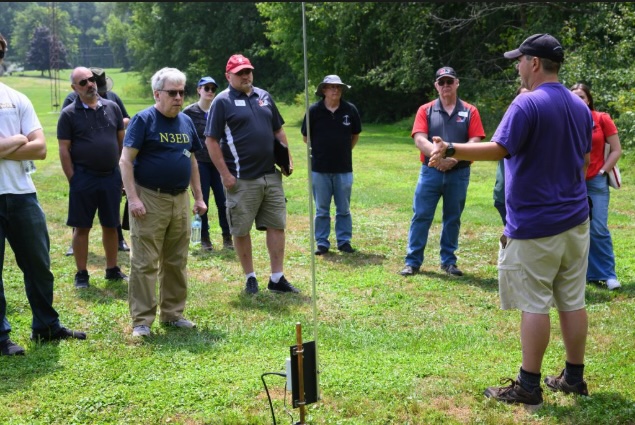There are many reasons to be proud as a member of the amateur radio community. Among those is knowing that the use of ham radio is expanding our knowledge of the atmosphere and how it works.
Dr. Nathaniel Frissell, W2NAF, professor of physics/electrical engineering at Scranton University and founder of HamSCI (Ham Radio Science Citizen Investigation), is one of the amateur operators at the helm of this important work. In addition to spearheading amateur-radio-based studies, his enthusiasm and curiosity are influencing students who are earning their amateur licenses and exploring new avenues of scientific inquiry.
Read these detailed interviews about Dr. Frissell and HamSCI at OnAllBands.
Dr. Frissell sat down with Tim Duffy, K3LR, DX Engineering CEO, to discuss the formation of HamSCI, the benefits of fusing amateur radio with academia, how the scientific community and everyday hams are joining forces to make an impact, and how operators like you can become involved. Watch the video below:
Dr. Frissell, along with University of Scranton students and faculty, was also at K3LR to install a HamSCI Personal Space Weather Station (PSWS), which he discusses in the video.
The goal of the PSWS project is to create a “geographically distributed, multi-instrument system capable of making ground-based measurements of the space environment,” per the HamSCI website. “The observations from this project will be useful to the owner of each system, but, more importantly, they will be aggregated into a central database for space science and space weather research purposes.”
“This is a software-defined receive radio that will listen to FT8 spots and WSPR spots across all bands simultaneously,” Frissell explained. “It will monitor WWV, WWVH, and CHU as well. We’re doing this for both scientific purposes and we’re also looking to help develop ways to also support amateur radio operations.”
“We’re hoping to get these receivers and ground magnetometers distributed as widely as possible and bring that data back to a central location so that students and other academics can really get a much better picture of what’s going on in the atmosphere.”
At the same time, the goal is for individuals who are hosting these systems to be able to benefit from the knowledge of how space weather is affecting operations at their own QTH.
The installation at K3LR included a WSPR Daemon/RX888 wideband SDR and a DX Engineering Receive Short Element Active Vertical Antenna.


The PSWS project is motivated by questions from both the science and amateur radio communities, as noted on the HamSCI website:
Science Questions
- How does the ionosphere respond to inputs from space and from the neutral atmosphere?
- How does the ionosphere couple with the neutral atmosphere and with space?
- What are the sources of medium and large-scale traveling ionospheric disturbances?
- What are the causes of Sporadic E?
Amateur Radio Questions
- How do disturbances such as solar flares, geomagnetic storms, and traveling ionospheric disturbances affect radio wave propagation?
- How does ionospheric science help amateur radio operators improve communications?
- How can I make measurements in my own backyard that will help improve my amateur radio operations?
In this second video with Tim, K3LR, Dr. Frissell discusses the recent Meteor Scatter QSO Party, the installation of the Personal Space Weather Station at K3LR, HamSCI featured on the cover of the August “QST” magazine, and more:
In addition to the installation of the PSWS, Tim, K3LR, hosted students, professors, research associates, and members of the ham radio community from western Pennsylvania and eastern Ohio at his station. The stay at K3LR included opportunities to operate from the station. Read more about the HamSCI Field Work at K3LR in this article.
For many more details on the PSWS project, the components of a PSWS, and how you can get involved, visit the HamSCI website.

